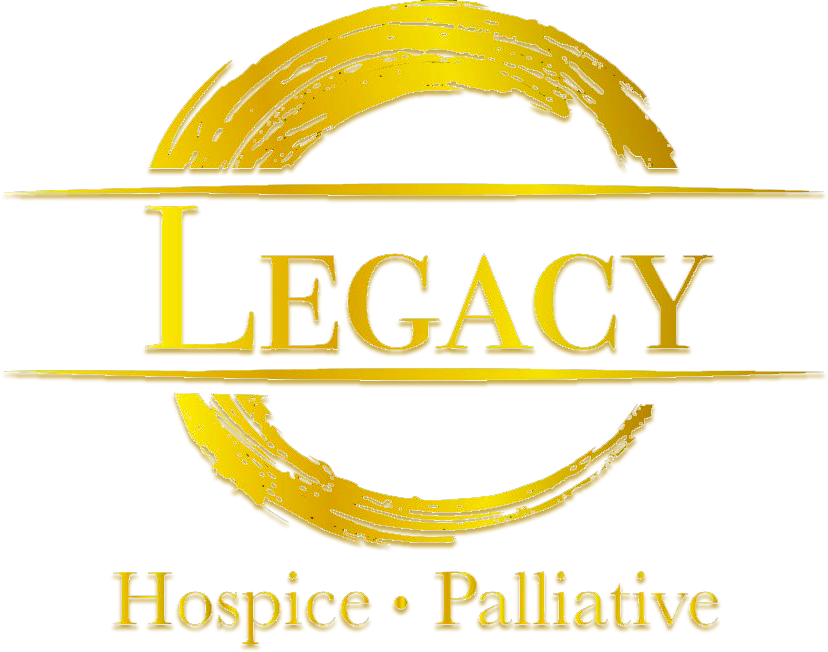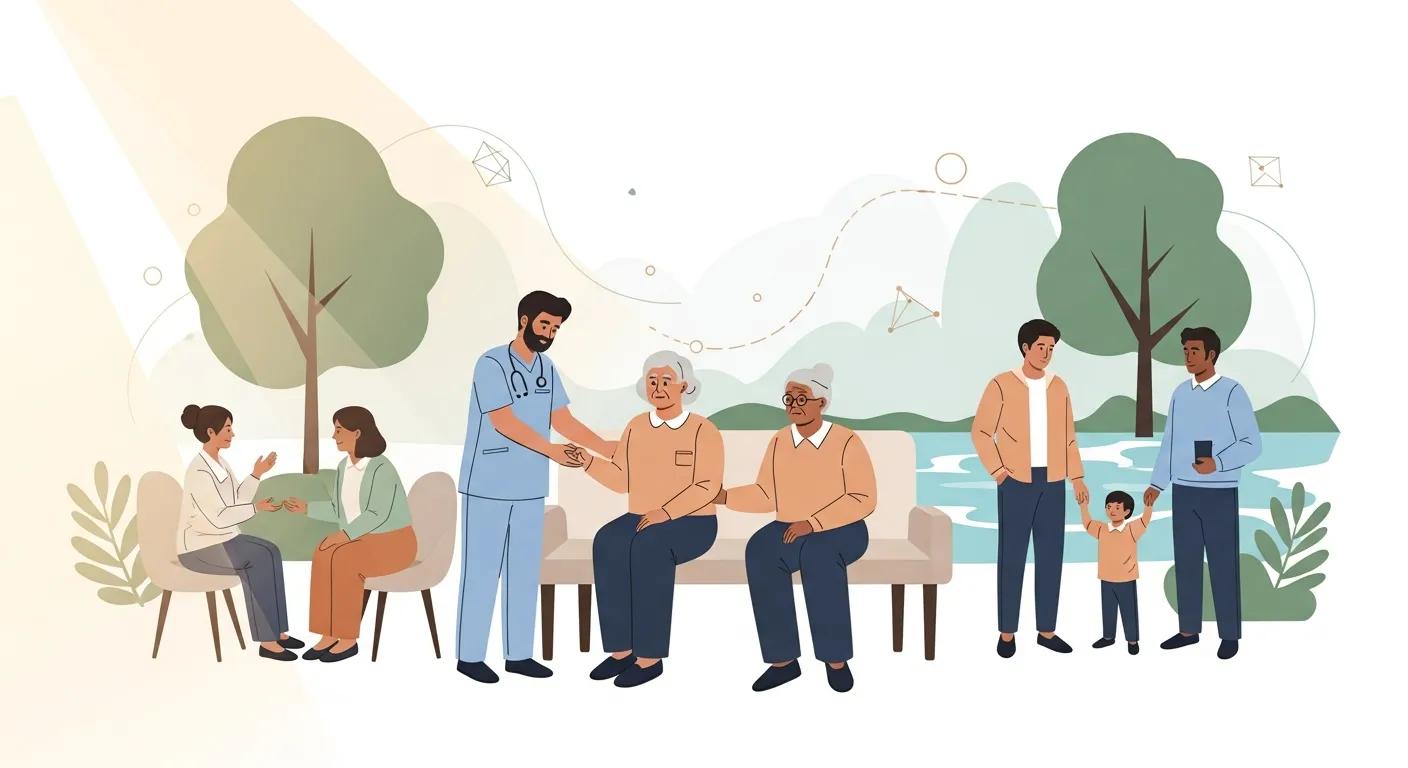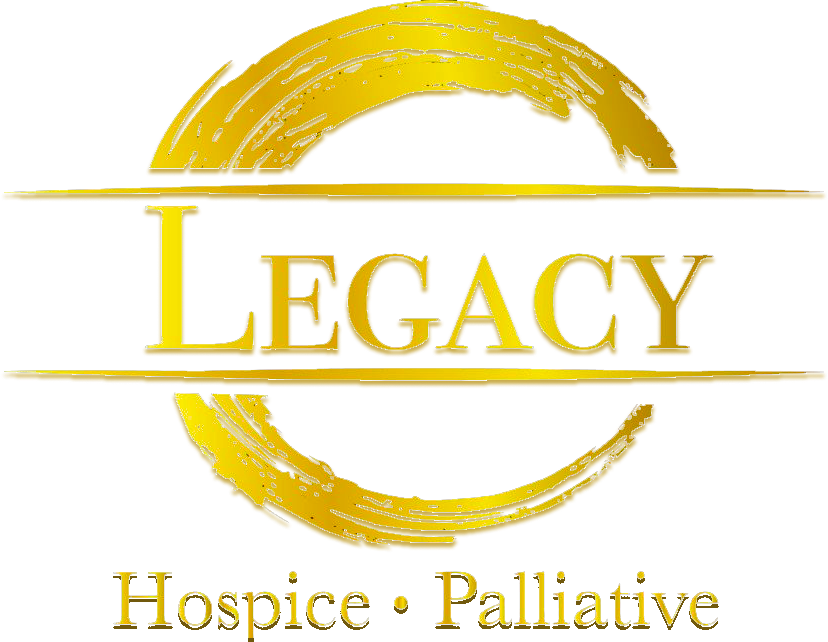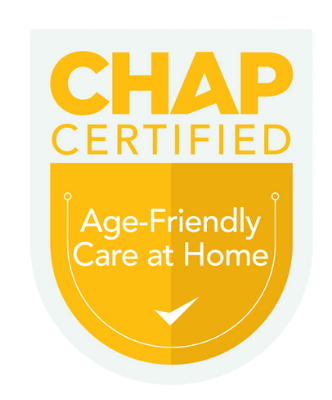Choosing hospice and palliative care can be overwhelming for families facing terminal illnesses and chronic conditions. In Southern California, diverse communities and high-quality care facilities mean it is essential to understand care options to ensure compassionate, comprehensive support for both patients and families. This guide outlines key questions to ask regarding hospice and palliative care—from definitions and core services to eligibility, costs, insurance options, and provider selection—so that families can make informed decisions to improve quality of life and ease caregiver stress.
In the following sections, each heading covers important aspects such as clinical definitions, eligibility, financial planning, and service models available in Southern California. The content provides concise, evidence-based explanations and examples to help families navigate these decisions while addressing both medical and emotional needs.
Families often worry about maintaining dignity, managing pain, and receiving treatments that align with their values. With top providers ranging from City of Hope Hospice and Hoag Medical Group to community-based agencies like Legacy Hospice and Palliative Care, it is vital to know the right questions to ask and services to expect. This guide offers clear, practical advice based on current practices and local expertise.
Transitioning into an in-depth exploration, the article begins with an examination of hospice care, its core services, and eligibility criteria.
What Is Hospice Care and Who Is Eligible in Southern California?
Hospice care is a multidisciplinary approach designed to provide comfort and support for terminally ill patients and their families by focusing on symptom relief rather than curative treatment. Core services include pain management, psychological counseling, spiritual support, social services, and continuous communication to maintain quality of life at the end-of-life stage.
What Defines Hospice Care and Its Core Services?
Hospice care emphasizes enhancing quality of life and focuses on personalized pain and symptom management, emotional support, and spiritual counseling. Teams of physicians, nurses, social workers, and chaplains work together to create care plans that honor the patient’s wishes. Services may be provided in-home, in a hospice facility, or in a combination, ensuring both physical and emotional needs are met. This approach is particularly important in a culturally diverse region like Southern California.
Who Qualifies for Hospice Care in Southern California?
Patients qualify for hospice care when their life expectancy is estimated at six months or less if the illness follows its usual course. Eligibility involves clinical assessments and discussions about care goals, and providers assess functional status, symptom severity, and available caregiver support. In Southern California, criteria align with Medicare and Medicaid guidelines, ensuring standardized care plans. Timely enrollment in hospice services can improve quality of life and reduce hospitalizations.
How Does Hospice Care Improve Quality of Life?
Hospice care enhances quality of life by emphasizing comfort and dignity while reducing unnecessary side effects of aggressive treatments. Benefits include advanced pain management, emotional counseling, and spiritual support. Round-the-clock monitoring allows care teams to adjust treatment plans as symptoms change, offering families reassurance and involvement in care decisions. Studies suggest that hospice care leads to higher patient satisfaction and less distress compared to aggressive treatments at the end of life.
What Questions Should Families Ask When Assessing Hospice Providers?
When choosing a hospice provider, families should ask about the agency’s certifications, staff qualifications, and how pain and symptom management is tailored to individual needs. Inquiries should cover available 24-hour support, responsiveness to cultural and spiritual needs, and the process for updating care plans as conditions change. Consulting national and state guidelines and asking for testimonials can help families decide on a provider that is both clinically competent and culturally sensitive.
Palliative vs Hospice Care in Southern California: Key Differences
Palliative care differs from hospice care mainly in timing and focus. While hospice care is reserved for patients in their final stages with an expected six-month life expectancy, palliative care is provided at any stage of a serious illness to alleviate symptoms and improve overall quality of life.
What Is Palliative Care and Who Can Benefit From It?
Palliative care is an interdisciplinary approach focused on reducing pain, symptoms, and emotional distress in patients with serious illnesses. Unlike hospice care, palliative services can be provided alongside curative treatments. Patients with conditions such as cancer, heart failure, or neurological disorders can benefit from early palliative support, which may improve satisfaction and even treatment compliance. In Los Angeles, specialized teams in palliative care address both physical and emotional needs.
What Are the Key Differences Between Palliative and Hospice Care?
The main differences lie in timing and purpose. Palliative care is provided at any point during a serious illness and supports both the patient and family through counseling and symptom management, even while curative treatment is ongoing. Hospice care, however, is strictly for end-of-life support and focuses solely on comfort when curative measures are no longer pursued. Settings for palliative care include hospitals, outpatient clinics, and home-based services, while hospice care is more often in home-like environments.
How Can Families Access Palliative Care Services in Southern California?
Access to palliative care often begins with a referral from primary care physicians or specialists. Many Los Angeles, Inland Empire, and Orange County hospitals have dedicated palliative care teams that assess needs and develop individualized plans. Community-based organizations and telehealth services also make palliative care accessible for patients with mobility or distance challenges. Insurance plans increasingly cover these services, and many providers coordinate with families to seamlessly integrate palliative care into the overall strategy.
What Symptoms and Conditions Does Palliative Care Address?
Palliative care targets a broad range of symptoms commonly seen in serious illnesses, such as pain, nausea, fatigue, shortness of breath, and anxiety. By offering personalized treatment plans that may include medications, physical therapy, counseling, and nutritional support, palliative care helps patients manage symptoms and maintain daily functioning during treatment. Teams often collaborate with hospice services if conditions evolve, ensuring continuity of care.
What Are the Costs and Insurance Options for Hospice and Palliative Care in Southern California?
Understanding the financial aspects of hospice and palliative care is essential for planning both medical and ancillary services. Costs vary based on care settings and patient needs, and families must consider insurance, state aid, and private assistance when budgeting.
What Insurance Plans Cover Hospice and Palliative Care?
Most major insurance plans, including Medicare and Medicaid, cover hospice care when patients meet eligibility criteria. Many private insurers also include palliative care as part of comprehensive health plans. Medicare’s hospice benefit covers a wide range of services, and managed care organizations may incorporate palliative care into chronic disease management programs. Families should review policy details with providers to understand limitations, preauthorization requirements, and any potential copayments.
Are There Financial Assistance Programs Available Locally?
Local programs, including state-sponsored initiatives, nonprofit grants, and community support services, help offset costs for hospice and palliative care. Many organizations partner with providers to offer subsidized care packages, particularly for underserved populations. Hospitals and elder care agencies may also provide charity care, easing financial burdens while ensuring access to quality services.
How Can Families Plan for Advance Care and Financial Decisions?
Advance care planning involves developing directives that reflect the patient’s wishes regarding treatment and care settings, while also addressing financial aspects. Families are encouraged to work with healthcare providers, financial advisors, and social workers to prepare essential legal documents (such as durable power of attorney) and to explore available financial support options. Proactive planning can minimize uncertainties during medical emergencies while preserving both the patient’s dignity and the family’s financial security.
How Can Families Choose the Right Hospice and Palliative Care Provider in Southern California?
Choosing the right provider requires evaluating clinical quality, compassion, and service flexibility. Families must gather actionable information by asking detailed questions, reviewing credentials, and comparing care models to identify the best match for the patient’s needs and cultural preferences.
What Factors Should Families Consider When Choosing a Provider?
Key considerations include accreditation, staff-to-patient ratios, and the range of services offered. Families should evaluate clinical expertise, patient satisfaction records, and responsiveness in symptom management. Multilingual support and flexible care models—whether in-home or facility-based—are particularly important in Southern California’s diverse communities. Reviews, testimonials, and proximity to family also play a significant role in determining a provider’s reliability and accessibility.
What Questions Should Be Asked During Provider Consultations?
During consultations, families should ask how pain and symptom management is handled, what the emergency support protocols are, and how family members are involved in care planning. They should also inquire about policies for complementary therapies and methods for measuring patient satisfaction. These questions provide insight into daily operations, helping families decide if the provider’s approach aligns with their needs.
How Important Are Accreditation and Awards in Provider Selection?
Accreditation and awards serve as benchmarks for high-quality care. Recognitions from organizations like The Joint Commission or CHAP indicate adherence to rigorous standards and regular quality audits. Such credentials also suggest a commitment to continuous improvement, which is particularly reassuring for families seeking reliable and ethical hospice and palliative care services in Southern California.
How Can Families Evaluate in-Home Versus Facility-Based Care Options?
Deciding between in-home or facility-based care depends on the patient’s mobility, available caregiver support, and intensity of required medical assistance. In-home care offers familiarity and close family engagement, while facility-based care provides more intensive, round-the-clock support. Families should visit facilities, observe operations, and consider travel logistics to determine which option best meets the patient’s needs.
What Support Services Are Available for Families and Caregivers in Southern California?
Support services are a critical part of hospice and palliative care, helping families manage the challenges of serious illness. In Southern California, a network of resources is available to offer emotional, practical, and respite support for both patients and caregivers.
What Bereavement and Emotional Support Services Exist?
Bereavement support is provided through counseling, support groups, and chaplaincy services that honor diverse cultural and spiritual values. These services help families manage grief with individual or group therapy sessions and crisis intervention when needed. Regular support meetings and educational workshops also assist families in adjusting to life after loss.
How Can Caregivers Access Respite and Practical Assistance?
Respite care is available in both in-home and facility-based programs, offering temporary relief to caregivers so they can attend to their own health. Additional support may include transportation, meal delivery, and advice on home modifications. Local nonprofit organizations and community resources often provide practical and financial assistance to help manage caregiving responsibilities.
What Role Does Advance Care Planning Play in Family Support?
Advance care planning ensures that care preferences and treatment decisions are discussed and documented ahead of time. By involving legal and financial advisors as well as healthcare providers, families can create directives and plans that help reduce stress during emergencies and ensure continuous care that respects the patient’s wishes.
How Do Local Cultural and Community Resources Enhance Family Support?
Southern California’s diverse communities offer culturally sensitive support through community centers, multilingual services, and tailored chaplaincy programs. These resources help families navigate the healthcare system, translate documents, and connect with local support networks that address both medical and emotional needs.
Where Can Families Find Hospice and Palliative Care Services in Specific Southern California Locations?
Hospice and palliative care services vary by location. Families in cities such as Los Angeles, Orange County, and San Diego have multiple options, and understanding regional differences is crucial for timely access to quality care.
What Hospice and Palliative Care Services Are Available in Los Angeles?
Los Angeles offers an extensive network of providers ranging from large medical centers to community organizations. Many institutions provide both hospice and palliative care under one roof, integrating advanced pain management, home-based options, and telehealth services. Educational programs and caregiver training further enhance the comprehensive support available in this multicultural region.
How Do Services Differ in Orange County and San Diego?
In Orange County, the focus is often on personalized in-home care and holistic support through strong community networks. In San Diego, providers commonly integrate care with academic medical centers and research-based protocols. Both regions offer culturally tailored programs, though families should consider proximity, service models, and specific provider expertise when deciding.
What Are the Contact and Access Details for Local Providers?
Local provider information is typically available on websites, health directories, and through referrals from primary care physicians. Many providers offer dedicated case managers and telehealth consultations to assist families with enrollment and ongoing care support.
How Can Families Use Telehealth for Hospice and Palliative Care?
Telehealth extends the reach of hospice and palliative care by facilitating virtual consultations, symptom monitoring, and support group participation. This technology enhances communication between families and care teams while reducing the challenges of in-person visits, especially for those with limited mobility.
What Are Common Questions Families Ask About Hospice and Palliative Care?
Families commonly ask questions to clarify care expectations and logistical considerations when choosing hospice or palliative care. These frequently asked questions help ease decision-making during difficult times.
How Do Families Know When It’s Time to Consider Hospice or Palliative Care?
Indicators include persistent pain, a significant decline in quality of life, frequent hospitalizations, and a consensus among healthcare providers that comfort care should replace curative treatments. Early discussions with physicians and advance planning can help families recognize when to make this transition.
What Should Families Expect During the Hospice Care Process?
The hospice care process involves an initial comprehensive evaluation followed by the development of a tailored care plan. Patients receive 24/7 support, medication adjustments, and counseling, all designed to maintain comfort. Families are provided with clear guidance on what services are available and how to manage emergencies and care transitions.
How Is Pain and Symptom Management Handled?
A dedicated care team performs regular assessments and develops personalized treatment plans that may include medications, non-drug therapies, and complementary treatments. Adjustments are made as symptoms evolve, ensuring optimal comfort and quality of life for both hospice and palliative care patients.
How Can Families Stay Involved in Care Decisions?
Active involvement is encouraged through care planning meetings, symptom management discussions, and consultations (in-person or via telehealth). Families are guided on legal and advance directive documents and can participate in support groups to stay informed and emotionally supported.
Frequently Asked Questions
Q: What distinguishes hospice care from palliative care?
A: Hospice care focuses on providing comfort for terminally ill patients with a life expectancy of six months or less, while palliative care can be offered at any stage of a serious illness alongside curative treatments to manage symptoms and improve quality of life.
Q: Are hospice services available in multiple settings in Southern California?
A: Yes, services are offered in-home, in dedicated hospice facilities, and in hospital-based programs, with providers tailoring care to meet patient and family preferences.
Q: How do insurance and Medicare cover hospice and palliative care costs?
A: Most plans, including Medicare and Medicaid, cover hospice care when eligibility criteria are met, and many private insurers include palliative care benefits. Families should review their policies to understand coverage details and any copayments.
Q: What support is available for caregivers?
A: Support includes respite care, counseling, support groups, and practical assistance programs coordinated by hospice providers and community organizations.
Q: How can families ensure they select a high-quality provider?
A: Families should inquire about accreditation, staff qualifications, 24-hour support availability, and cultural sensitivity. Visiting facilities and reviewing testimonials can further aid in making an informed choice.
Q: Can families switch from palliative to hospice care if needed?
A: Absolutely. Many providers offer a continuum of care that allows for a smooth transition as the patient’s condition evolves, with open communication ensuring that care remains aligned with the patient’s needs.
Q: What role does telehealth play in hospice and palliative care?
A: Telehealth enables remote consultations, symptom monitoring, and participation in care planning, improving accessibility and ensuring continuous care, especially for those with mobility challenges.
By exploring these aspects, families can make informed decisions that preserve dignity, reduce suffering, and improve quality of life during challenging times.






